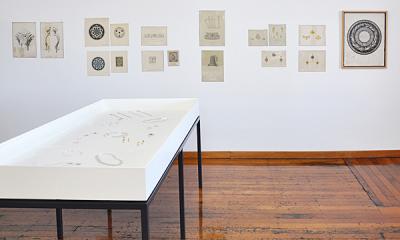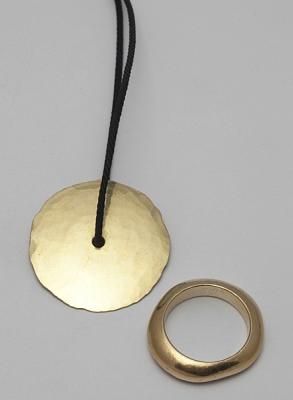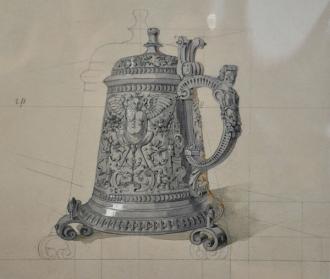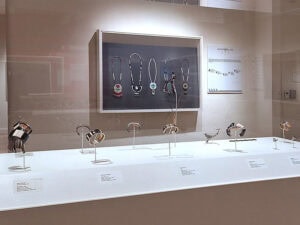
Susan Cummins: You are the third generation in a line of Swiss goldsmiths. Why does this seem important for you to explore in this exhibition?
Kobi Bosshard: I like to remind myself, and others, that the world did not begin with me. That our forebears, for example my grandfather and my father, were highly skilled goldsmiths, and that I am at the very present edge of a very long tradition.

Susan Cummins: You are the third generation in a line of Swiss goldsmiths. Why does this seem important for you to explore in this exhibition?
Kobi Bosshard: I like to remind myself, and others, that the world did not begin with me. That our forebears, for example my grandfather and my father, were highly skilled goldsmiths, and that I am at the very present edge of a very long tradition.

Kobi Bosshard: I do not think that the attitudes are different. We all do the best we can within the traditions and the confines of the society in which we live and work.
How would you describe the difference between traditional goldsmiths like him and contemporary jewelers like you?
Kobi Bosshard: I believe that we all were and are working in the traditions of the trades and crafts, for example a craftsman’s responsibility is to challenge this very tradition and make it relevant in his own time and place.
What do you think he would say if he could see your jewelry?
Kobi Bosshard: I like to believe that, taking into consideration the different time in which I work, he would at least respect and hopefully like my work. My father did.

You were born and did your jewelry apprenticeship in Switzerland. How did you end up in New Zealand?
Kobi Bosshard: After completing my apprenticeship, I was a journeyman. As that, my aim was to “journey,” to work in different workshops and extend my skills and knowledge. An opportunity for this opened in New Zealand. New Zealand sounded rather exotic and had mountains for me to climb, so I came here and stayed.

Kobi Bosshard: The manufacturing jewelers made and the shops sold very conventional rather than traditional jewelry. I think there is a misunderstanding of tradition. I talk about tradition in contrast to convention. Most of what we see in jewelry shops is conventional jewelry. The diamond rings made today look virtually the same as the ones made 10, 20, 50 years ago. A jeweler working in the tradition would question what has come before and would make a ring appropriate to his own time. One of the most important aspects of tradition is that every craftsperson must question or challenge that very tradition. If he suceeds and brings it a stage or fraction further, then he can call himself a master.
How would you say it has changed in the 40 plus years you’ve been working as a jeweler?
Kobi Bosshard: In the 1960s, it was two other European colleagues and I who provided a new kind of jewelry. From the very beginning, we received a lot of support and could make our living from our work. This had an impact. Polytechnics started to teach jewelry. Now, the scene is quite large, and there are a lot of jewelers doing their own work. We have very good, very visible galleries in all of the major cities. There is a lot of healthy co-operation.
Do you keep in touch with what’s happening back in Switzerland?
Kobi Bosshard: No.
Is the exhibition all new work? What’s your attitude toward making old work again?
Kobi Bosshard: I call work old when it has lost its relevance for the present time, when I have lost or passed my interest in an idea or design. I cannot remake old work. On the other hand, there are pieces and ideas that are still fresh after up to 50 years, and I still get excited making them now. Some I have made hundreds of, some only four or five. There are two new brooches in the present exhibition. The rest are revisits of older ideas.
Thank you.





